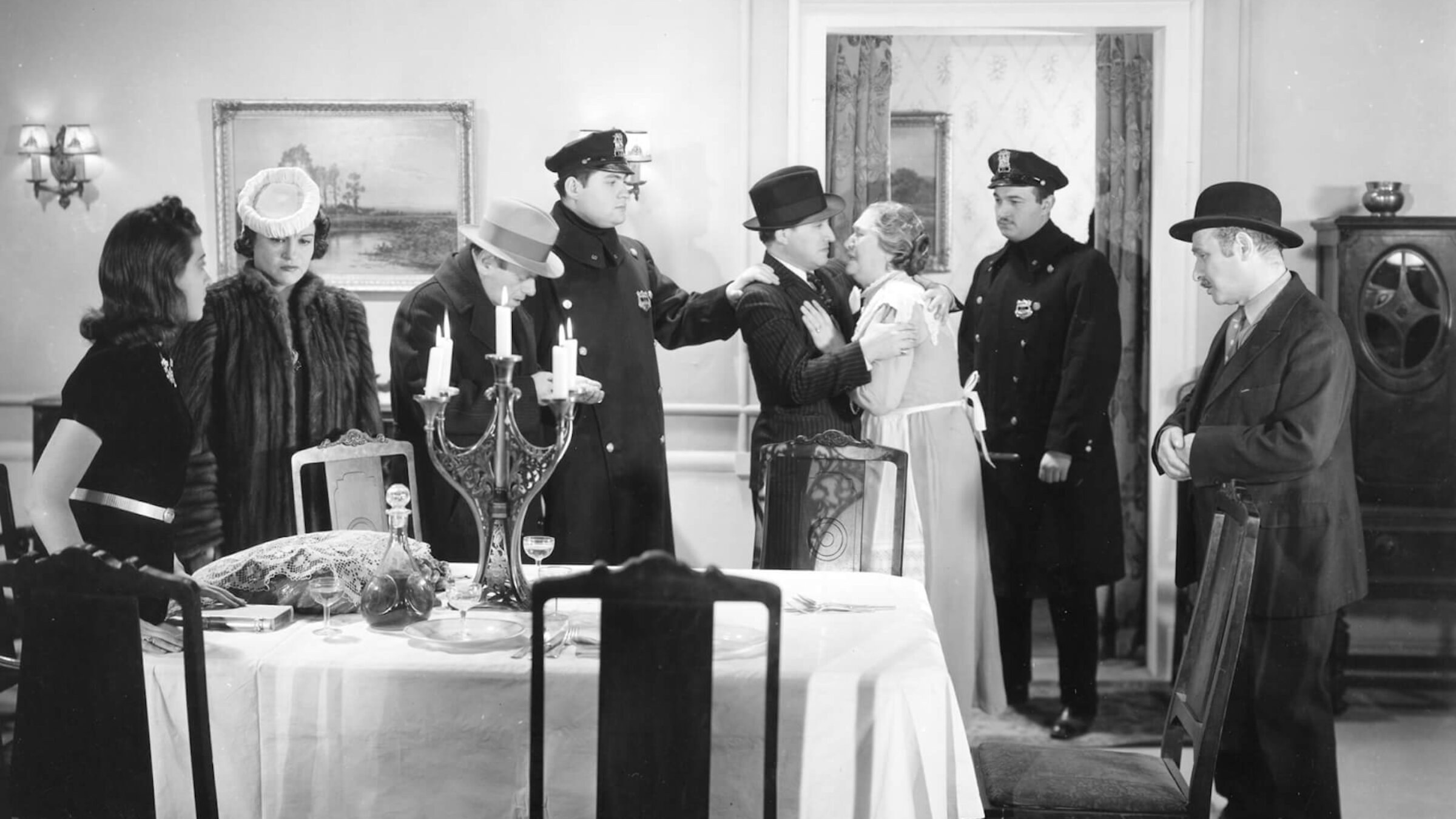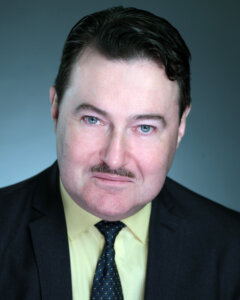Restored 1939 Yiddish melodrama ‘Mothers of Today’ is silly, but fun
A mother drinks, smokes, gambles, and mocks the old-fashioned mother next door

A scene from the film Mothers of Today, 1939. Photo by the National Center for Jewish Film
In a popular Yiddish film released in 1939, a male character named Getsl Bokser says, “Mayn vayb iz fun di hayntike mames” (“My wife is one of those ‘nowadays’ mothers”). His wife clearly is ‘a modern woman’: she drinks, smokes, gambles, goes to nightclubs and mocks her old-fashioned neighbor Mrs. Valdman.
But the film, aptly titled Hayntike Mames (“Mothers of Today”), actually comes down on the neighbor’s side: though Mrs. Valdman suffers miserably for 89 minutes, in the 90th minute her old-world values are vindicated.
Unlike other world cinemas, Yiddish cinema was a direct outgrowth of the stage, and throughout its heyday in the 1930s remained closely tied to its source. The actors and writers of American Yiddish films were all moonlighting between theater jobs. Most of the movies’ exterior scenes were shot within a few blocks of the Hebrew Actors Union’s headquarters in the East Village. As if to emphasize the stage-and-screen connection, the montage that opens Hayntike Mames includes shots of lower Second Avenue, the former Yiddish rialto (theater district).
As was the case with Yiddish plays, Yiddish films were classified by critics as belonging to one of two categories. One was called kunst (art); the other shund (trash). Kunst films like Grine Felder (“Green Fields”), Tevye, and Der Vilner Balebesl (“Overture To Glory”) were typically based on genuine literature, had period settings, never interrupted the action with irrelevant songs or comic relief, had larger (though still modest) budgets, and were made by directors with a sense of the medium (like Edgar G. Ulmer or Max Nosseck).
Shund movies, on the other hand, are like Hayntike Mames.
In the early days shund onstage tended toward brainless operettas like the biblical blockbuster Alexander, Crown Prince of Jerusalem, which featured beefy actor Boris Thomashefsky in tights, riding out onstage on a real white horse. As the legend goes, shopgirls fainted at his appearance. So, presumably, did critics. But by the 1920s and ’30s this kind of spectacle was no longer fashionable. Shund now consisted almost exclusively of domestic melodramas: interior-bound, urban and contemporary, and with modest-sized casts. Their plots usually dealt with the miseries suffered by immigrant parents in trying times. Typical titles — yes, these are all real — include:
Hayntike Tsaytn! (“The Times Nowadays!”)
Hayntike Kinder! (“Children Nowadays!”)
Hayntike Mener! (“Men Nowadays!”)
Hayntike Froyen! (“Wives Nowadays!”)
Hayntike Tekhter! (“Daughters Nowadays!”)
Hayntike Meydlekh! (“Girls Nowadays!”)
Naturally, it was women who suffered the most, especially — who could have seen this coming? — Jewish mothers. Mostly it was because of their “ungrateful” American children, in plays like:
A Mames Neshome! (“A Mother’s Soul!”)
A Mames Korbn! (“A Mother’s Sacrifice!”)
Di Blinde Mame! (“The Blind Mother!”)
Farvos Veynsti, Mame? (“Why Are You Crying, Mother?”)
Vu Iz Mayn Mame? (“Where Is My Mother?”)
Fargesene Mames (“Forgotten Mothers”)
Hayntike Mames (“Mothers Nowadays”) was clearly unavoidable.
The movie portrays Mrs. Valdman’s efforts to keep her innocent daughter and cantor son on the straight and narrow, which are made more difficult by the presence next door of Mrs. Bokser’s two children: her gold-digger daughter and her gangster son. Their father, Mr. Bokser, the movie’s raisonneur — played with a comical Warsaw Yiddish accent by Smon Wolf, a prolific writer of shund plays who also wrote the film’s script— sympathizes with Mrs. Valdman, but what can he do? He’s the classic ineffectual Jewish husband.
In most respects Hayntike Mames is a typical shund movie. It takes place in “the Land of Yiddish,” where everyone — hospital nurses, police officers, prison officials — knows the language. It has the occasional song tossed in, plus a bit of comic relief, including two funny scenes with actor Arthur Winters as young Miss Waldman’s shlemiel suitor. It’s cheap and obvious and has the emotional subtlety of a Tommy gun.
But in some respects the film is unique. It’s well-paced, and the songs and the comic relief actually fit into the plot smoothly. It also shows some sense of the world outside it. Although the film’s main characters, Mrs. Valdman and Mr. Bokser, express nostalgia toward their European homelands, the film was produced in 1939, and hints at how dark things were getting over there — it’s the only shund movie that did that. And for what is really a very silly movie, the plot is shrewdly built. Instead of tossing climactic moments around scattershot through the film, as other shund movies do, Hayntike Mames gets more melodramatic as it goes along, which makes it a lot more fun (as long as you’re not foolish enough to take it seriously!).
Best of all, it has a substantial subplot involving Jewish gangsters. As is well known, there were plenty of Yiddish-speaking Jews in New York’s underworld back in the day. One scene even depicts a meeting of Yiddish-speaking gangsters. Though in most respects Hayntike Mames is completely generic, the lead gangster (the actor may have been cast because he had an actual scar on his cheek) may be the only ‘capo’ in the history of the movies who smokes a pipe. Combined with his soft-spoken manner, this gives him a rather fatherly quality as he orders his underlings to “Rub out that cantor!”
Journeyman filmmaker Henry Lynn was a veteran of shund films, having directed six of them before this — including the utterly hilarious Bar Mitzvah, which featured the old shund-meister himself, Boris Thomashefsky, in a mugging performance that is the thickest slice of kosher “ham” ever recorded. But for the most part in Hayntike Mames, the actors play it straight and let Leon Field’s wonderfully over-the-top score provide the eye-rolling and chest-clutching.
In no conventional respect could Hayntike Mames be considered something admirable, but it’s certainly the best of the shund movies, and it’s highly entertaining if you come to it with the right attitude. For those with a particular interest in the Yiddish language, there’s an added bonus: It’s a fascinating record of American Yiddish circa 1939. The English words absorbed into the vocabulary (even among the European-born characters) and the American accents in the speech of the younger actors reflect the Yiddish that many of our parents and grandparents spoke. It’s nice to hear it again.
A restored print of Hayntike Mames recently premiered at the New York Jewish Film Festival in January 2024. It is available on DVD from the National Center For Jewish Film.
























